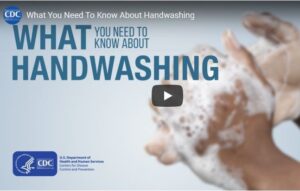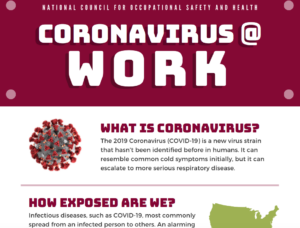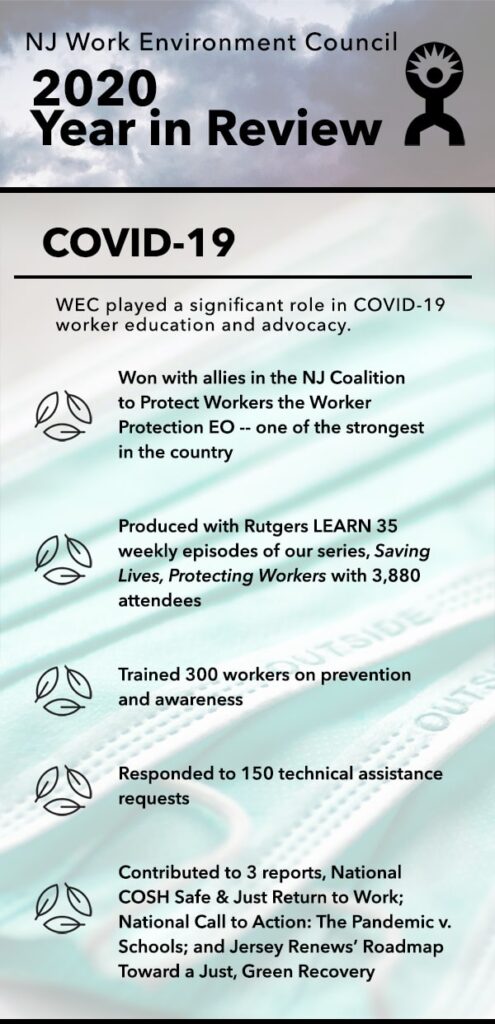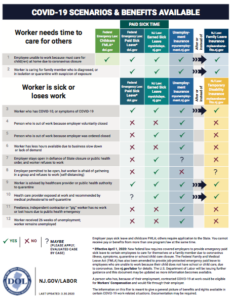COVID-19 Resources
What is COVID-19?
The most recent coronavirus, COVID-19, is a new strain of virus that hasn’t been identified before in humans. The COVID-19 virus is a respiratory pathogen that is highly contagious, and it is far more lethal than the flu virus.
Some symptoms of coronavirus include – fever, cough, body aches and tiredness and they can worsen and cause pneumonia, fluid in the lungs that leads to shortness of breath. The COVID-19 illness is more severe than the flu, and the chance of dying from it is greater than the seasonal flu, estimates up to 30x greater risk of death. COVID-19 has been able to spread from person to person very easily and requires an immediate response to protect workers and the general public.
The best way to prevent illness is to avoid being exposed to this virus. Some recent studies have suggested that COVID-19 may be spread by people who are not showing symptoms. The virus is thought to spread mainly from person-to-person, between people who are in close contact with one another (within about 6 feet), through respiratory droplets produced when an infected person coughs, sneezes or talks because these droplets can land in the mouths or noses of people who are nearby or possibly be inhaled into the lungs.
Protect Yourself!
Steps to Take to Protect Yourself
Below are some steps you can take to protect yourself at work or in your daily life. This is not a comprehensive list. It is important to note, as more is learned about COVID-19, the Center for Disease Control and Prevention (CDC) continues to update their guidance on how to protect yourself. For the most recent updates, visit the CDC website.
- Wear a mask to protect yourself and others and stop the spread of COVID-19. Wear your mask over your nose and mouth and secure it under your chin. Fit the mask snugly against the sides of your face, slipping the loops over your ears or tying the strings behind your head.
- Stay at least 6 feet (about 2 arm lengths) from others who don’t live with you.
- Avoid crowds. The more people you are in contact with, the more likely you are to be exposed to COVID-19.
- Avoid poorly ventilated spaces.
- Wash your hands often. If soap and water are not readily available, use a hand sanitizer that contains at least 60% alcohol.
- Monitor health daily.
- Get Vaccinated to Protect Against COVID-19
- Clean and disinfect objects and surfaces you touch often. Use cleaning products as directed.
Employers should follow the MOST protective guidance and standards issued by state or federal agencies. If guidance contradicts each other, the MOST protective should be implemented.
COVID-19 Weekly Updates: Saving Lives, Protecting Workers
In this weekly series, we will hear from and talk with public health experts, government officials, medical personnel, front-line workers and worker representatives about the latest developments in the fight against COVID-19. The series is sponsored by WEC, Rutgers Learn and Jersey Renews and airs on Tuesday @ 12pm. Want to receive weekly series emails, sign up here.
Past Webinar Summaries
October 6: Domestic Work, Workers’ Rights, and COVID-19
When we advance the rights of domestic workers, we advance the rights of all women and all workers,” Tatiana Bejar reminded us at yesterday’s webinar. Tatiana spoke as part of a panel of organizers and academics leading on multiple fronts in the fight for domestic workers’ rights — before, during and after COVID-19.
Many labor laws passed in the New Deal area explicitly excluded domestic workers. Today, protections that have been legally guaranteed in most occupational sectors for nearly a century are still denied to those who do perhaps the most essential work of all: raising our children, caring for our […]
September 29: Building Ventilation and Minimizing Exposure to Covid-19
This week’s webinar focused on the fundamentals of building ventilation, including important steps that can be taken in your workplace to reduce COVID-19 transmission.
We were joined by David M. Newman, M.A., M.S. EOHS Associates LLC Environmental & Occupational Health & Safety Industrial Hygiene and a consultant to WEC.
Dave stressed that while it is impossible to make buildings “safe” during the COVID crisis, we can reduce the risk of contracting the virus by utilizing a number of “tools” such as proper physical distancing, masking, PPE, cleaning and disinfecting, contact tracing, and adequate ventilation. There were more than 127 participants on this webinar.
Here […]
September 22: Preparing for Natural Disaster During a Pandemic
This summer, we’ve seen an unprecedented season of storms that has already barrelled through the full alphabet. We’ve also had to deal with these disasters in the midst of another, prolonged crisis — the COVID-19 pandemic. Two experts joined us today to advise on what climate impacts New Jersey is experiencing and should anticipate, as well as to offer tips on how we can prepare our families and communities for extreme weather events while staying as safe as possible from COVID. There were more than 60 participants on this webinar.
Dr. Anthony Broccoli, Co-Director of the Rutgers Climate Institute, […]
September 15: Worker Health = Public Health during a Pandemic
This week we were joined by:
- Peter Dooley (MS, CIH, CSP) Safety and Health Senior Project Coordinator for National COSH and President of LaborSafe, who spoke about the importance of health and safety organizing, and its connection to broader public health issues, in building worker power. He went on to discuss national COSH’s historical work around these issues through community RIght to Know campaigns around the country.
- George T. DeFerdinando, Jr., MD, MPH, FACP, Chair of the Princeton NJ Board of Health and on the Executive Committee of the New Jersey Local Boards of Health Association, who spoke about some […]
September 1: Labor Day Celebration & The Importance of Worker’s Voice During the Age of COVID, with Special Guest Elise Bryant
This week we held a Labor Day discussion about the role of union and worker voices in ensuring workplace safety.
We were joined by acclaimed labor activist Elise Bryant, Executive Director of the Labor Heritage Foundation and President of the Coalition of Labor Union Women. Elise shared that one in three jobs categorized as essential are held by women. She spoke about how women have held multiple rolls during the pandemic and shared that Black and Latina women have suffered the largest job loss and biggest pay gap. Sadly, domestic abuse has also skyrocketed during this time as well. Ms. Bryant stated that this is the time for the […]
The COVID-19 webinar series is sponsored by



Benefits for Workers
NJ Department of Labor and Workforce Development Resources
- What NJ Workers Need to Know about the Families First Coronavirus Response Act Factsheet
- NJ Division of Unemployment: https://myunemployment.nj.gov/
- Guidance for Self-Employed Individuals Filing a Pandemic Unemployment Assistance Claim and FAQs
- NJ Family leave Insurance: https://myleavebenefits.nj.gov/labor/myleavebenefits/worker/fli/index.shtml
- NJ Earned Paid Sick Leave: https://www.nj.gov/labor/worker-protections/earnedsick/law.shtml
- NJ Temporary Disability Insurance: https://myleavebenefits.nj.gov/labor/myleavebenefits/worker/tdi/index.shtml
Federal Paid Sick Leave and CARES act expansions and stimulus
- US Department of Labor: Families First Coronavirus Response Act: Employee Paid Leave Rights



